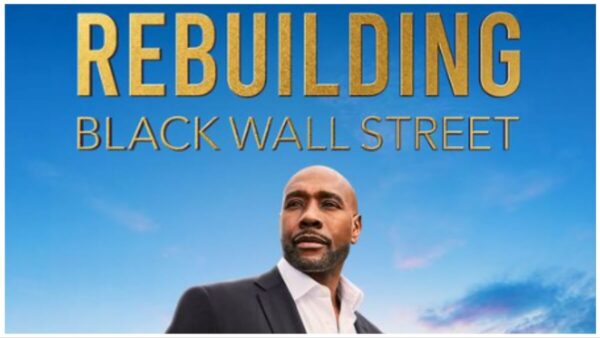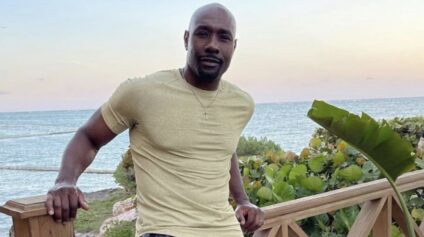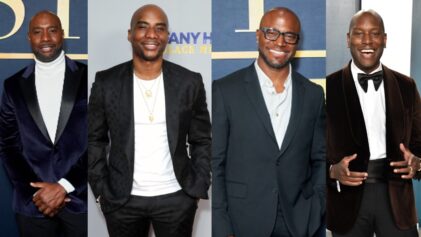The first episode of OWN’s new documentary series “Rebuilding Black Wall Street” premiered last week on Friday, Sept. 29, and there was much to digest.
The show, hosted by Morris Chestnut, goes into the history of the residents that made Tulsa, Oklahoma’s Black Wall Street what it was. It also follows their descendants as they work with designers and construction workers to create a foundation for success.
Trending Today:
- ‘They Aren’t Going to Disobey Their Paymasters’: Wallo’s Speech About Helping Those Less Fortunate Receives Cold Response In a Room Full of Millionaires
- ‘Talking Wreckless…When Your House Is In Shambles’: Black Twitter Dredges Up Jodie Turner-Smith’s Comments About Will and Jada Pinkett Smith Amid Recent Divorce Filing from Joshua Jackson
- ‘If We Get Married, They Don’t Come First’: After Two Divorces, LeToya Luckett Says Her Next Husband Should Come Before the Kids
The first episode, titled “The Birthing Center,” follows a descendant of the race massacre named Montika Collins. Collins is a registered nurse and lactation consultant planning to build a “natural birthing oasis” in North Tulsa, Oklahoma. The episode follows Collins’ hardships as she tries to finish up the maternity center in time for the grand opening.
Collins’ reasoning behind building the center is deeply rooted in the history of Tulsa and the lasting impression of racial biases on all Black people. While the show focuses on rebuilding, it also gives information about Tulsa that many people may not know about the city of approximately 60,000 African-Americans.

Here are five things we learned from the first episode of “Rebuilding Black Wall Street.”
The Lost Remains of Collins’ Ancestor
Early in the episode, Collins’ says that her great-great-grandfather lived in Tulsa, but he died in 1921. This was the same year as the massacre, but it is not explicitly stated that he died during the event. Collins said that her family cannot find their ancestors’ remains. Like the Collins family, many descendants of the people who were murdered in the race riot can’t or haven’t found their ancestors’ remains. This is because many of the people killed were thrown in unmarked graves.
Just one day after the episode was released, a state archaeologist announced that the latest search for graves had ended, and seven sets of remains were exhumed. Fifty-seven of the 59 graves were previously unmarked and unknown. There are most likely many more unmarked burial sites, as the murderers dumped many of the estimated 300 people killed as a way to get rid of the bodies.
Join us as we follow the lives of these Tulsa, Oklahoma descendants working to build a new legacy. OWN Spotlight presents: Rebuilding Black Wall Street, hosted by Morris Chestnut. Tune in to the premiere on 9/29 on OWN, and stream on Max starting 11/4. #RebuildingBlackWallStreet… pic.twitter.com/o6pPRslwNQ
— Oprah Winfrey Network (@OWNTV) September 27, 2023
Birth Centers vs. Hospitals
Collins had all of her children in Tulsa, and while pregnant, she tried to find an all-black birthing team. This was due to Black women having a higher chance of dying during childbirth. The CDC says that Black women have a three times higher maternal mortality rate than white women.
One of the factors contributing to that rate is structural racism in medical institutions. To combat that, some women can choose to have a more intimate connection during labor at a freestanding birth center. It is important to note that while birth centers offer a more home-like feel, they are meant more for low-risk pregnancies, and there is a chance that if something goes wrong, the mother will have to go to the hospital.
Canzaty Smith: The Super Midwife
While walking through Greenwood’s city block, Collins stopped at a poster commemorating Canzaty Smith. Smith, born in 1900, was known as the “Midwife of Greenwood” as she birthed 209 babies. At age 21, Smith witnessed the burning of all of Greenwood’s medical centers during the race massacre. Later on in life, Smith gave birth to Lelia Foley. Foley was America’s first Black female mayor.
New Black Wall Street docuseries hosted by Morris Chestnut on OWN’s YouTube channel ♟️🔥
— best (@bestorossa) October 3, 2023
Since Smith passed away in 1977, Black midwifery has plummeted. According to a 2021 American Midwifery Certification Board report, only 7.3 percent of certified midwives are Black, even though Black people comprise around 14 percent of the U.S. population. During the episode, Collins said that “there are no Black midwives in the state of Oklahoma.”
How Urban Renewal Caused the Second Death of Black Wall Street
While many attribute the death of Black Wall Street to the 1921 race massacre, that is actually not true. The Greenwood neighborhood was rebuilt almost immediately. Just five months after most of the town was in ruins, it was reported that 764 of the 1256 destroyed homes were already in the process of rebuilding.
During the opening of the episode, Morris Chestnut says, “That horrific act of racial violence, followed by decades of forced urban renewal and so-called ‘revitalization’ reduced Greenwood to just one city block and destroyed generations of Black wealth and prosperity.” Urban renewal also took the form of the Federal-Aid Highway Acts of 1965 and 1968, which helped lead to the building of interstates like I-244 that cuts across the Greenwood district.
Redlining, which made it harder for Black Tulsans to own their own homes, and eminent domain, which did not pay displaced Black Tulsans enough when they were removed from their homes, also contributed to the community’s decline.
The Wealth Gap Left After the Race Massacre
During the episode, Collins discusses how finances are her most significant problem with building the birth house. Even though her family has lived in the same area for over a century, the Collinses were not able to build up the generational wealth that many of her white counterparts have been able to.
This is not a coincidence, as after both deaths of Black Wall Street, it was almost impossible for Black Tulsans to build off of any success they had due to systemic racism. The wealth they would have accrued during their times of prosperity could not be passed down to their descendants. After their businesses were burned in 1921, their area was slowly devalued throughout the 1950s-1970s. This affected Greenwood’s chance to grow over the decades financially, putting Black Tulsans at a significant disadvantage.
The next episode will be released on Oct. 6. “The Family House” will follow Tulsa massacre descendant Rachel Walker as she tries to preserve the home passed down in her family for generations.


